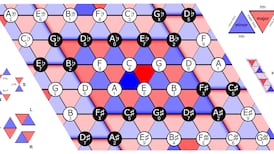The teeth of children who died during the Famine carry a hidden history of their short lives and tragic deaths. Chemical analysis of the teeth using a new technique can reveal diet and also the point when starvation set in.
The new method called “incremental dentine collagen analysis” involves looking for the signatures of chemicals such as nitrogen or carbon in growing teeth. These chemicals arise in the diet and are deposited in the dentine as the child’s teeth grow, explained Julia Beaumont of the University of Bradford who developed the technique with Janet Montgomery at the University of Durham.
They discussed the technique on Wednesday at the British Science Association Festival of Science in Bradford.
The scientists described their analysis of a young woman who lived 5,000 years ago and who died in her 20s. She developed severe rickets, a condition caused by lack of vitamin D. The analysis showed she was native to where she was found on the Hebridean island of Tiree and that although surrounded by water, she only ate terrestrial foods and none from the sea.
Dr Beaumont led a study published earlier this year of the baby teeth from children who died during the Famine of 1845-1852. The researchers used teeth of children buried at a workhouse in Kilkenny and another in London where many Famine victims were buried.
Baby teeth grow steadily from before birth up to age nine or 10, said Dr Beaumont, who worked for 30 years as a dentist before turning to research. The teeth are cut into slices and changes in the chemical signatures reveal information about what the children were eating.
“We know they were eating potatoes then you see the carbon balance changing when they started eating maize,” she said. But just before this signal the nitrogen values change, an indication that starvation had set in. Nitrogen deposition in the teeth rises as the child begins to recycle muscle and other tissues and they begin to waste away, Dr Beaumont said.
Powerful tool
The technique is a powerful tool in recreating conditions as they were in the past and was first described in a research paper in 2013. She can easily see periods in the child’s life down to nine months and in some conditions even as short as three months.
The age range is also extending given adult teeth continue to grow at the roots up to about age 23, she said.
It is even possible for her to look at what chemical levels were being deposited in infants’ teeth before birth. This gives information about the child but also the health of the baby’s mother.
The technique can reveal if the child had scurvy, a condition caused by lack of vitamin C or pellagra caused by lack of vitamin B.
She believes that the technique could help predict the future health of children born today.
“If we can show that baby teeth, which are lost naturally, provide markers for stress in the first months of life, we could have an important indicator of future health risks, such as diabetes and heart disease,” she said.












